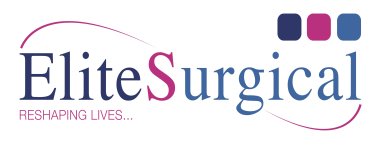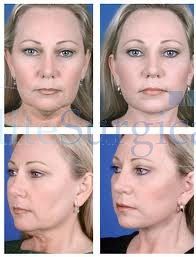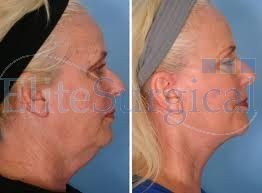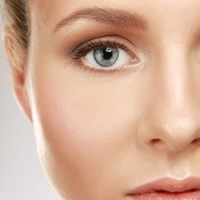Facelift Surgery
A facelift (rhytidectomy) is a procedure that reduces and tightens the skin around the lower of half of your face, jaw line and neck to achieve a firmer more youthful appearance. There is a range of facelift options and your Plastic Surgeon will discuss these with you to choose the one most suited to your requirements.
Facelift Surgery
Medically known as Rhytidectomy, Facelift surgery remains the gold standard surgical way to restore and rejuvenate the ageing face. Facelift and necklift surgery can help reduce the appearance of facial wrinkles and various signs of ageing such as volume loss. To help correct loss of fullness in the face that always happens with ageing, Fat Transfer is often combined with facelift surgery to really give that wow effect. For most people, the signs of ageing begin in the late 30’s, however, the best time to get the facelift surgery is when you are in between the ages of 40’s and 60’s and feel ready for surgery. Sometimes we can delay the need for surgery till later by the use of dermal fillers and botulinum wrinkle relaxing injections or by more simple minor facial freshening local anaesthetic procedures such as one stitch lifts. Once the signs of ageing become more visible many patients will opt for a definitive facelift procedure. These signs of ageing include of folds on eyelids, deep wrinkles at the corner of the mouth, skin with lesser elasticity, droopy jaw lines, jowls etc. It is to be noted, that all signs are not always visible at the same time. They may dawn gradually – depending on various factors such as your genes, physiology, lifestyle and the health conditions of a person, eating & drinking habits, sun exposure and mental stress level.
There are several types of facelift surgery – each addressing different ageing issues and targeting different facial features. Selecting the type of facelift depends on the targeted areas and patient’s expectations with his/her post surgery appearance.
Traditional Full Facelift with or without Necklift helps correct deep creases below the eyes, drooping cheeks, lines around the mouth, skin around chin, jowls, etc. In this surgery, the skin around the temple, ear, and neck is expunged, lifted and the underlying muscle is tightened. People in their 50’s & 60’s usually prefer to undergo this surgery.
SMAS Facelift or Superficial Musculoaponeurotic System Facelift is one of the most popular cosmetic facelifts available, today. In this type of surgery, the tissues around the middle of the face and cheekbone is lifted and repositioned. To perform a SMAS lift, the surgeon will create an incision at the temple, which is then extended downwards. It is widely used by the people with mild laxity, jowls and mid-face drooping.
Mid-Face Lift targets the areas around eyes and cheeks, where the layers over the cheekbones are lifted and re-positioned. It is commonly preferred by those patients who only require cheek elevation and not around neck. This lift gives a refined facial structure with minimal risk and downtime.
Mini Facelifts improves the cheeks and jawline for patients who would like a subtler look. The Mini Facelift surgery has shorter recovery time and is very common amongst patients who shows the initial signs of ageing but require both an upward and backwards tighten to improve their cheeks, jowls and jawline contour.
The Modified One Stitch Lift is a local anaesthetic day case minor operation performed by Mr Sultan Hassan which places an incision in the temple and lift the muscle upwards and backwards to give a fresher look to the face in those patients not keen on more invasive facelift surgery. The procedure takes around an hour and gives a result that can last upto 18-24 months in some patients.
The Thread Lifts also known as the One Stich Lift is performed to create a smooth and taunt appearance, without complicated and invasive surgery. The treatment provides a very subtle improvement in the cheeks and jaw line, and has a much shorter healing time than traditional facelift.
Effectively preparing for facelift surgery can keep patients calm and can greatly improve the results. A regular smoker or tobacco eater must stop taking these at least 4 weeks before the surgery. Some medications and supplements could lead to medical complications, hence, patients on any type of medications should discuss this during their consultation with their surgeon. During the initial consultation, your surgeon will discuss your medical history, chosen procedure, preferred anaesthesia, limitations, etc. You might be asked to undergo certain medical tests to know your fitness level.
There are many different kinds of facelift, but generally incisions are made above the hair line at the temples, extending down in front, and under the ear and into the hairline. The skin is then pulled backwards and upwards before being stitched into its new position. At the end of the operation, the surgeon closes up the incisions with stitches and applies a dressing to protect the area where the incisions were made and to minimise bruising and swelling. An overnight stay in hospital is usually required. These bandages will stay on for one or two days and the stitches are removed after about a week.
Patients who have undergone other facial surgery (particularly blepharoplasty) will also benefit from a facelift as tauter skin on the forehead, temple and brow helps the eyes appear bright, open and awake looking.
The first week after the facelift surgery is very important for patients. It is best to get the procedure done when you have minimum work load and stress. This way, patienst can get enough rest and promote prompt uncomplicated healing after the surgery. Post-surgery, it is important to keep mobile which helps to reduce the risks of thrombosis. Bruising, swelling and pain, are very common, may cause uneasiness, but they will start to improve within the first few days after surgery. After the first-week-post-surgery the face often makes patients anxious, some even avoid the mirror for a week. However, the feeling and look is temporary and they start to see the desired results in the coming weeks.
Post-Surgery, it is advisable to avoid energetic chewing and excessive talking. For the first few days after a more major facelift or necklift procedure, liquid and soft diet (chopped, ground, mashed, pureed, and moist food) is strongly advisable. Patients should can showers, gently wash the wounds and apply a thin layer of polyfax ointment to help the wounds stay clean and avoid infection. The chin strap should be worn regularly for at least the first week after surgery and then as often as life allows for another month. Patients should use ice-packs for small durations and on regular intervals for the first couple of the days of the surgery. If patients are experiencing severe pain, unnatural swelling or fever, they should contact the doctor immediately. Clean your incisions at least twice a day and try to avoid wearing sunglasses and eye glasses. If you can’t avoid glasses, make sure they are not putting pressure on the incisions in any form; use cotton pads to avoid direct contact. Do not blow dry your hair or colour them for at least a month.
The outcomes of your surgery also depend majorly on the skills of your surgeon. If you think, you are ready for facelift surgery, then book your consultation with arguably one of the UK’s best cosmetic and plastic surgeons, Mr. Sultan Hassan. Mr Hassan will advise you on all the options to restore a more youthful appearance and which occasionally is not surgery but using the full range of non-surgical options such as dermal fillers or botox. During your consultation, we will discuss every aspect of your surgery in detail, to ensure you decide on the best option to meet your desired outcome.
PaPPS – Pre and Post Procedure Support in partnership with The Wright Initiative
| Operation Time | 2 – 3 hrs |
| Anesthesia | general |
| Nights in hospital | 2 |
| Common Risks | common bruising, swelling, temporary numbness |
| Uncommon Risks | infection, bad scarring, asymmetry, bleeding, permanent numbness, nerve damage. |
| Pain and discomfort | 3 – 7 days |
| Follow-up after surgery | 1 week, 2 weeks, 3 months |
| Time off work | 2 – 4 weeks |
| Sports | 2 weeks walking |
| 4 weeks fast walking | |
| 6 weeks everything | |
| Result | 12 weeks until final result scars continue to improve over 18 months |
What happens at my first consultation?
During your consultation it is very important that you fully discuss the the pros and cons of your procedure. Your surgeon will discuss the procedure in full including any risks involved in addition to the likely outcome. Your surgeon will also discuss whether or not you are suitable for a face lift or if there is an alternative depending on your desired outcome.
Who is the most suitable for face lift surgery?
The best facelift patient has jowls, loose neck skin and a general saggy appearance to the skin on the face and neck. If the patient also has lots of wrinkles, non-surgical facial rejuvenation treatment can be combined with a facelift for an improved overall result.
What should I look for when choosing a surgeon?
You should ensure that the surgeon has all the relevant qualifications and accreditation.It is also important to establish just how many procedures the surgeon has carried out. Our surgeon is UK accredited and is a fully-qualified GMC registered Consultant Plastic, Cosmetic Surgeon, he is a member of the British Association of Aesthetic Plastic Surgeons (BAAPS) in addition to being a member of the British Association of Plastic, Reconstructive and Aesthetic Surgeons (BAPRAS). Our surgeon is also a member of the American Society of Plastic Surgeons (ASPS), the Association of Breast Surgery (ABS) and the British Association of Surgical Oncology (BASO). Our surgeon has also been awarded prestigious fellowships including Royal College of Surgeons of England FRCS (Eng), Royal College of Surgeons in Edinburgh (FRCSEd) and a specialist fellowship in Plastic, Reconstructive and Aesthetic Surgery. Our lead surgeon is fully trained, qualified and experienced and would be entitled to hold a substantive NHS Consultant Plastic Surgeon post in the NHS As well as the accreditation’s and qualifications it is also important that you develop a good rapport with your surgeon and that they understand fully what you hope to achieve from the operation and also your desired appearance following your face lift surgery.
What support can I expect when making the decision to have surgery?
You can expect ongoing support and access to our surgeon if you wish. Our partners The Wright Initiative can also offer psychological support.
What are the possible risks associated with face lift surgery?
As with any surgery there are always risks but these will be fully explained by your plastic surgeon in your consultation. The common risks involved with face lift surgery are bruising, swelling, temporary numbness. In uncommon instances the risks can be infection, bad scarring, bleeding, permanent numbness or nerve damage.
What does the procedure involve?
The procedure is done under general anaesthetic and will take between 2-3 hours. You will usually stay in hospital for up to 2 nights.
What recovery should I expect?
There will be swelling and bruising after the surgery and you can expect to feel pain and discomfort between 3-7 days. You should take between 1-2 weeks away from work and refrain from running for up to 4 weeks.
What happens after the surgery?
You will receive follow up appointments with the surgeon after 7 days, 2 weeks and 3 months but if you have any concerns you can meet up with the surgeon as many times as you like free charge.
What results can I expect?
Check out our before and after photos in this section.
Our cost for a Lower Facelift is from £18,995.00
The procedure is usually performed under a general anaesthetic at our specialist clinic and usually involves a one night stay in hospital.
This cost includes all your consultations before surgery and unlimited appointments following your procedure.
For a consultation please complete our contact form or telephone 0800 001 6688






















